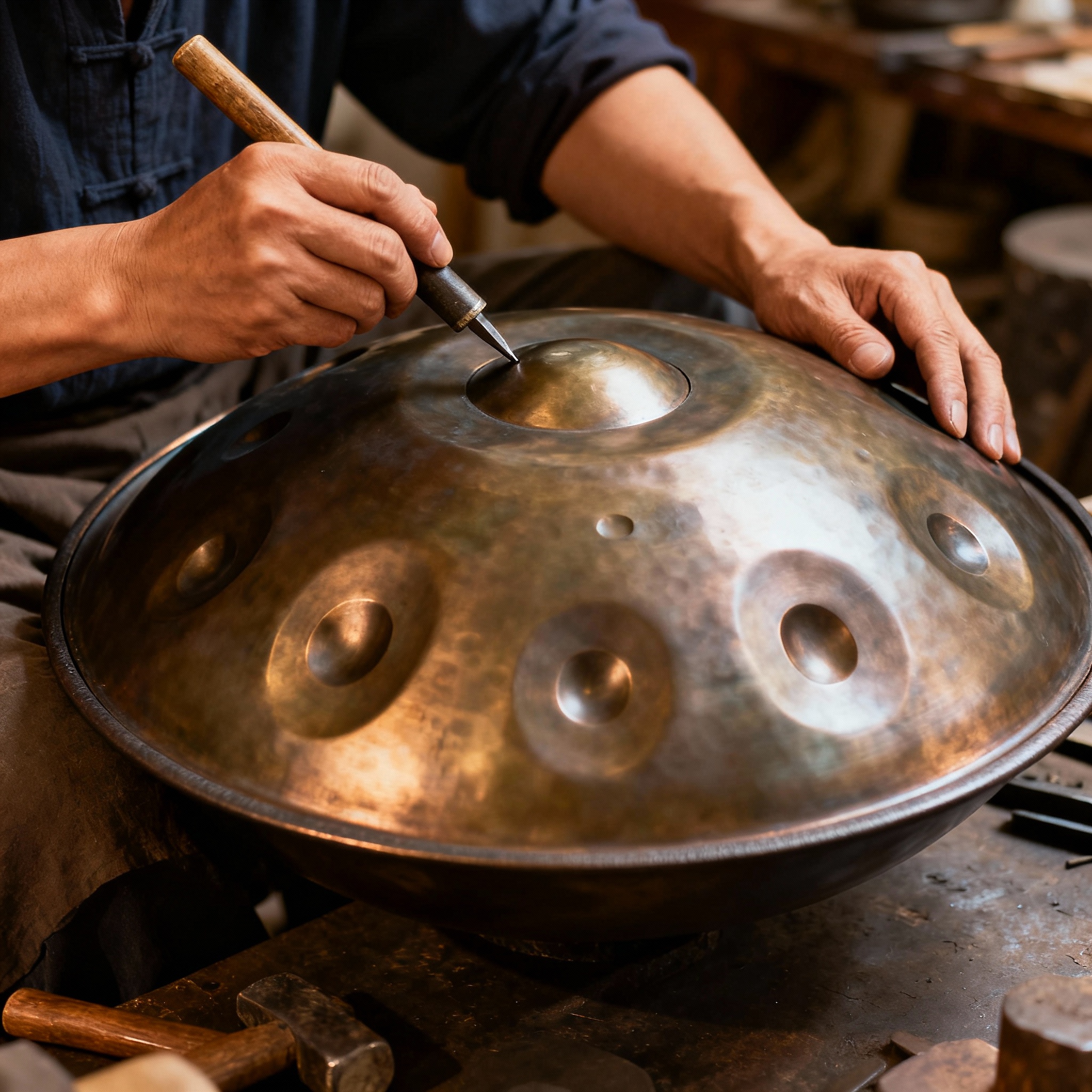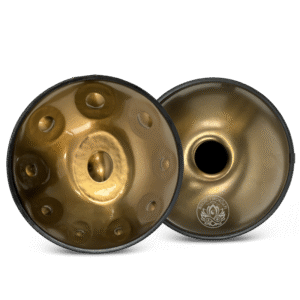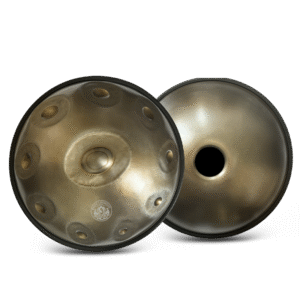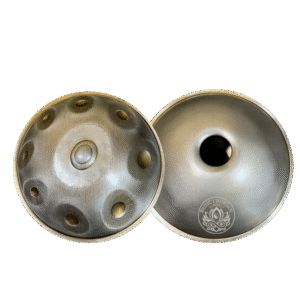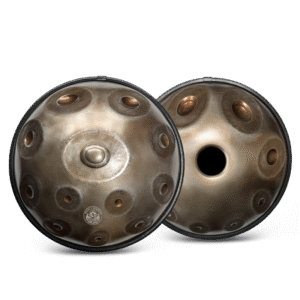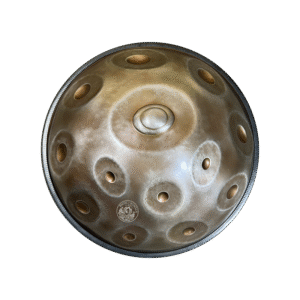Handpan is a unique instrument that combines art, craftsmanship and music. Its sound, durability and character are largely dependent on the material from which it is made. In the world of handpans, we most commonly encounter two types of steel: Ember Steel i Stainless Steel (stainless steel). Each of these materials has its own unique properties that affect the sound, use and aesthetics of the instrument. In this article, we will look in detail at the differences between them to help you choose a the perfect handpan for your musical needs.
What is Ember Steel?
Ember Steel is a specialised type of stainless steel that has been designed for the manufacture of musical instruments such as handpans. It is a material with unique acoustic and mechanical properties that make instruments made from Ember Steel stand out.
Properties of Ember Steel
- Long sustain
One of the most distinctive features of Ember Steel is its ability to resonate sound for a long time. Sustain, which is the time it takes for a note to ring out after it has been struck, is much longer than with standard stainless steel. This allows musicians to create more meditative and deep compositions. - Warm and "ceramic" sound
The sound of handpans made from Ember Steel is often described as warm, soft and 'ceramic'. This means that the notes have purity and precision, and their harmonics are rich and clear. - Diversity in sound
It is worth noting, however, that Ember steel can sound differently depending on the batch of material used to make the instrument. Each batch of steel has subtle differences in molecular structure, which affects the character of the handpan's sound. Therefore, even two tools made by the same manufacturer may have a slightly different sound.
What is Stainless Steel?
Stainless Steel is a material commonly used in many industries for its corrosion resistance and durability. In the manufacture of handpans, stainless steel has become a popular choice due to its acoustic properties and ease of maintenance.
Stainless Steel properties
- Bright and metallic sound
Handpans made of stainless steel have a brighter sound than those made of Ember Steel. The sounds are more metallic and expressive, making them ideal for dynamic playing styles. - Long sustain
Although the sustain of stainless steel does not match the length of Ember Steel, it is still impressive and allows for the creation of spacious musical compositions. - Corrosion resistance
Thanks to its chromium content in the alloy, stainless steel is naturally resistant to rust. This makes instruments made of this material easier to maintain and less susceptible to damage from moisture.
Differences in harmonics and aliquots
Harmonics and aliquots play a key role in the sound of a handpan. They are additional sounds created when a tonal field (note) is struck. Harmonics are usually an octave or fifth of the main note, while aliquots can be more subtle and more difficult to pick up.
Ember Steel
- Instruments made from Ember Steel have exceptionally rich harmonics. Octaves and fifths are clearly audible, giving each note depth and fullness.
- The aliquots are more subtle than with stainless steel, but their presence adds warmth to the sound of the instrument.
Stainless Steel
- The harmonics in the stainless steel handpan are brighter and more expressive. This makes the instrument sound dynamic and energetic.
- The aliquots are more metallic and can be less subtle than in Ember Steel, giving the instrument a distinctive 'metallic' tone.
Tuning process
Configuring handpana is an extremely complex process involving the precise alignment of each tonal field to a specific note and its harmonics (octaves and fifths). The material used to make the instrument has a huge impact on the ease of tuning and the stability of the tuning.
Ember Steel
- Due to its molecular structure, Ember Steel is easier to tune than stainless steel.
- Instruments made of this material remain tuning stable for a longer period of time, even with intensive use.
Stainless Steel
- Customization stainless steel can be more difficult due to the greater flexibility of the material.
- Stainless steel instruments are more susceptible to tuning changes due to temperature or humidity.
Summary of differences between Ember Steel and Stainless Steel
| Feature | Ember Steel | Stainless Steel |
|---|---|---|
| Sound quality | Warm ceramic | Bright, metallic |
| Sustain | Very long | Long |
| Harmonics | Rich | Expressive |
| Aliquots | Subtle | Metallic |
| Corrosion resistance | Very high | High |
| Stability of the outfit | More stable | Less stable |
| Price | Higher School | More affordable |
Which material to choose?
The choice between Ember Steel and Stainless Steel depends on your musical preferences and expectations of the instrument:
- If you are looking for a warm sound with rich harmonics and tuning stability - choose a handpan from Ember Steel.
- If you prefer a bright sound with dynamic tones and are looking for a more affordable instrument - Stainless Steel will suit you.
Resume
Handpans are extraordinary musical instruments with versatile applications. The choice of the right material - Ember Steel or Stainless Steel - is crucial to the character of the sound and the durability of the instrument. Remember, however, that each handpan is unique and even small differences in material can affect its sound.
If you want to learn more about this magical instrument or are looking for the perfect handpan for you, visit our blog
, where you will find lots of inspiring content dedicated to meditation music! 🎵

